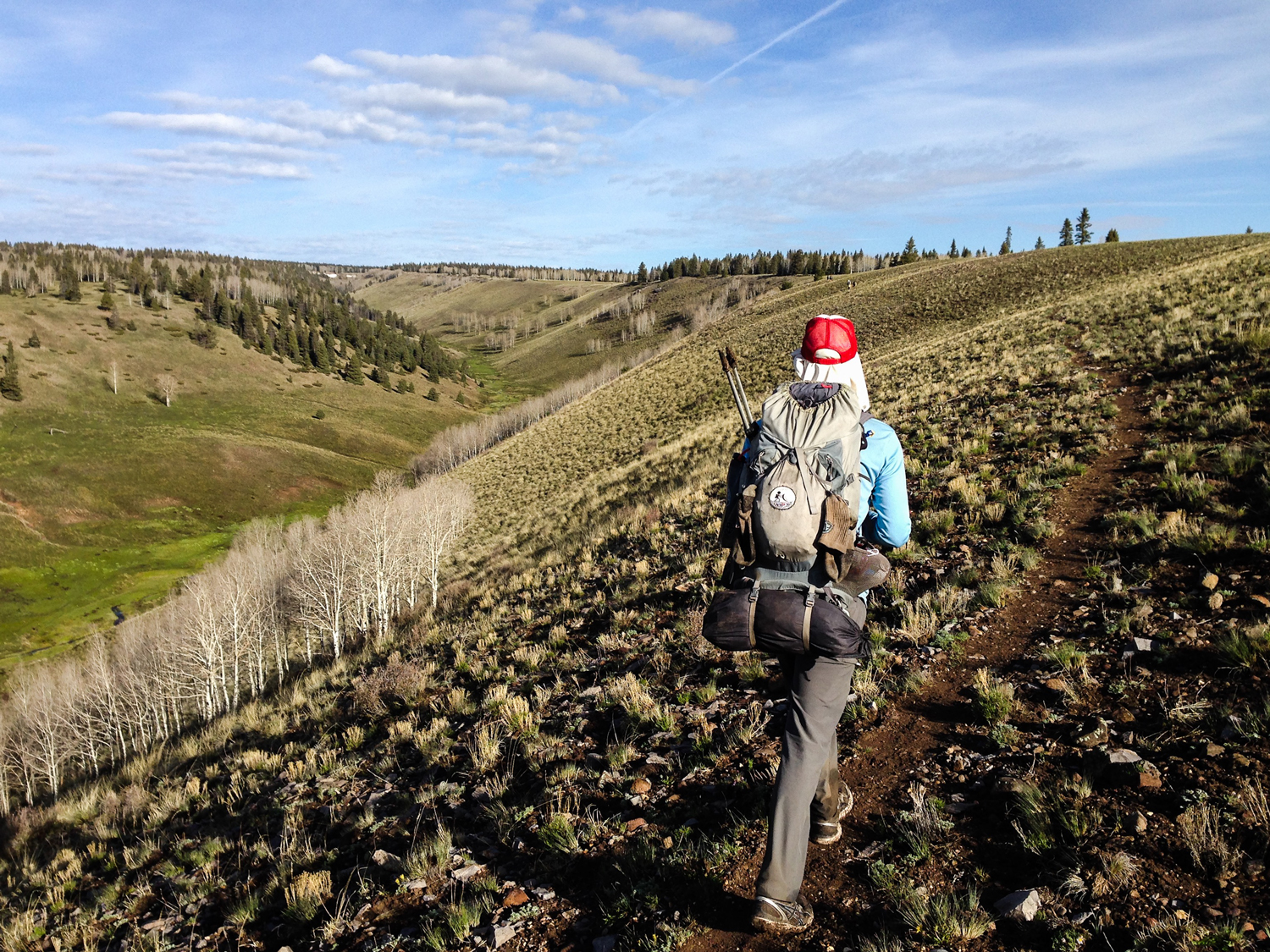I knew I was in trouble when after half an hour my tent still lay in a heap on the desert floor.
Every time I picked it up, the wind gusted and my shelter—a tent-tarp hybrid—flailed violently. Other thru-hikers camped in the ocotillo forest around me. As night fell, I could hear them finishing their meals. I imagined them watching me, thinking what a joke this guy is.
By the time I set the shelter upright, more than an hour’s time had elapsed. The night was pitch black. I crawled into my sleeping bag with my pounding heart, wide-awake and panicked.
Night one on the Continental Divide Trail, I thought, and I can’t even pitch a tent.
I slept two hours on the hard-packed desert floor, then commenced the journey through southern New Mexico’s Chihuahuan Desert. The route led along the flanks of the Big and Little Hatchet Mountains, sere brown ranges that cut like serrated knives’ edges through immense flats of yucca and creosote bushes. I rolled through barrancas. I cowered from the sun beneath a mesquite tree as beads of stinging sweat rolled into my eyeballs.
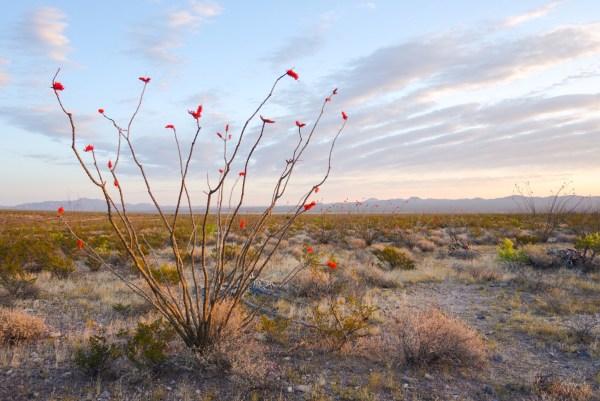
An ocotillo stands in the Chihuahuan Desert of southern New Mexico.
Those first few days, the enormity of it all was staggering—not only the immediate landscape, but also the idea of what I’d set out to do: a 2,800-mile walk from Mexico to Canada along the backbone of America. I’d saved money for two years. I’d spent a fortune on gear. I’d compiled a map set as thick as a cinder block, and I’d stuffed loads of food into resupply boxes that my mom would mail to me at towns along the trail. I thought I was prepared. But trudging through that Chihuahuan Desert, the whole endeavor seemed fragmented, half-cocked, and, frankly, too big to fathom.
I limped into Lordsburg, the first trail town, on April 24, four days after starting. The next morning, I went to breakfast and met a rangy traveler from Atlanta, Georgia. Corey White had previously hiked the Appalachian Trail. As we walked out together, he taught me an early lesson in distance-hiking coping.
“You can’t think about the whole thing,” he said. “It’s too big. Think of it in small steps. Think about getting to Silver City. Better yet, think about getting through today.”
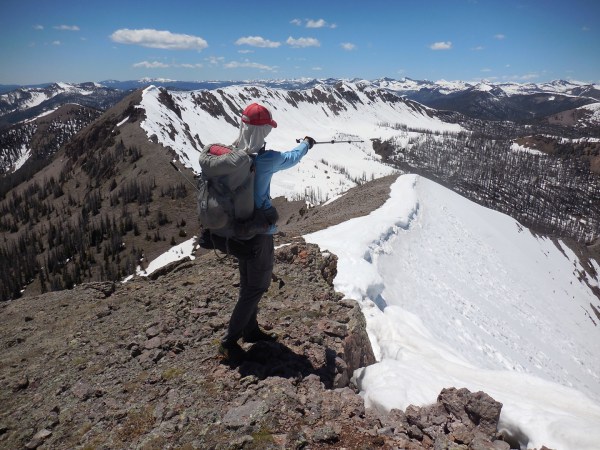
Corey White points down a ridgeline in Colorado’s San Juan Mountains.
Corey and I hiked all of New Mexico together, rambling through the high-walled Gila River Canyon, over the black El Malpais lava flow, and among the candy-colored sandstone buttes surrounding Ghost Ranch. After that, our bond of friendship was cemented—a good thing, too, considering what lay in wait in Colorado’s lofty San Juan Mountains.
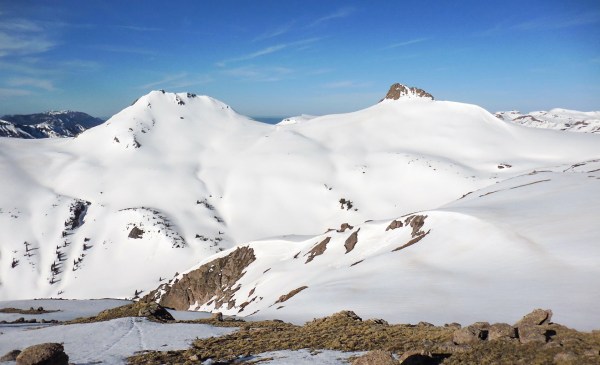
Peaks stand covered in snow in Colorado’s South San Juan Wilderness.
While traversing New Mexico, rain and snow became part of our daily lives. The fallout: burgeoning snowpack in the San Juans. Corey and I were joined by Meg Roussos, a hiker from Ohio and one of the most uncomplaining people I’ve ever met. Much of the trail in the San Juans runs above 12,000 feet. We wallowed through dazzling oceans of coruscating snow, bringing our sopping-wet feet to the verge of frostbite. We strapped crampons onto our trailrunners and kicked steps through hanging sheets of ice. One night we heard an avalanche tumbling through a couloir above camp. The following day we fought an eight-hour blizzard.
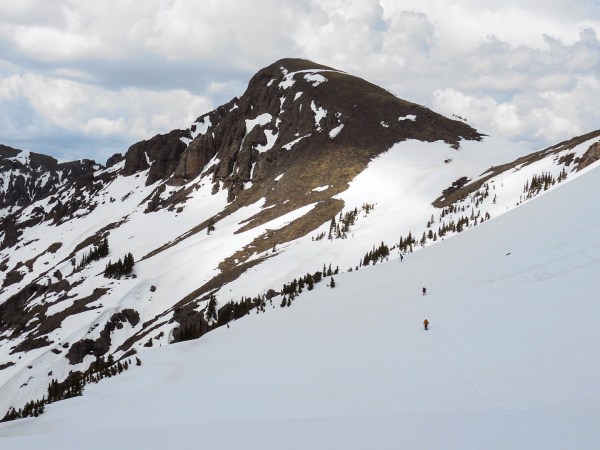
Continental Divide Trail hikers traverse a snowfield in the South San Juan Wilderness.
The San Juans scared me, but also instilled confidence. Further down the trail, near a place called Hope Pass, I wrote in my journal: “My anxiety must have drained away in some river I passed long ago. I finally feel that I belong here. The trail is my home.”
We did big miles in Wyoming fearing we wouldn’t make it to Canada ahead of winter snows. I stumbled in a delirium of heat exhaustion and boredom through the shadeless Great Divide Basin, stood in awe beneath the castellated granite spires of Wyoming’s Wind River Range, and bathed in the geyser-fed hot springs of Yellowstone’s backcountry. Meanwhile, wildfires raged in Montana, threatening to block our passage.
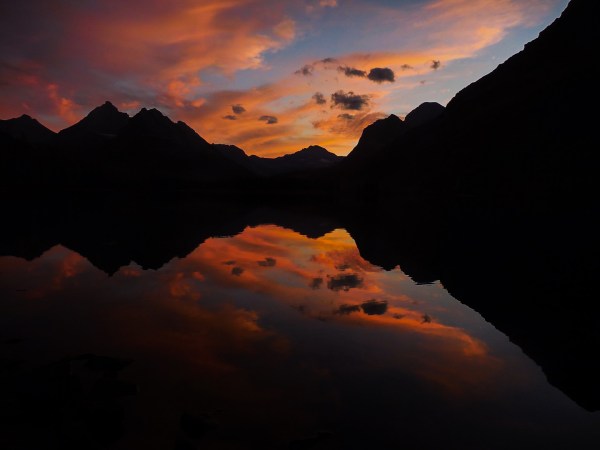
Red Eagle Lake reflects mountains and clouds at sunset in Glacier National Park.
When we got to the Bob Marshall Wilderness in mid-September, however, snowstorms snuffed the fires, clearing the way for us to enter Glacier National Park—the place which was, for me, the trip’s crowning jewel. As I walked along the jagged massifs and gazed down deep into vales hung with dying glaciers, I realized I was sad to be leaving the trail, a place which had at first filled me with fear, but eventually came to engender everything I love in exploration and adventure.
Learn more at Continental Divide Trail Coalition (CDTC).
